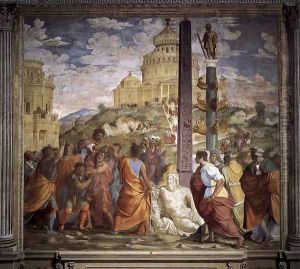Francesco Franciabigio Paintings
Francesco Franciabigio, whose real name was Francesco di Cristofano, was an Italian painter during the High Renaissance period. Born in 1482 in Florence, Italy, he was a contemporary of many famous Renaissance artists and worked closely with Mariotto Albertinelli. Franciabigio's style was influenced by the works of Fra Bartolomeo, and he was known to collaborate with Andrea del Sarto, with whom he shared a workshop.
Franciabigio's early works exhibit a meticulous attention to detail and a fine technique. He was deeply influenced by the art of Raphael and Leonardo da Vinci, evident in his use of chiaroscuro and the soft modeling of his figures. Franciabigio's paintings often depicted religious scenes and portraits, characterized by their clarity, harmony, and grace.
One of his notable works includes the fresco 'John the Baptist' for the Scalzo in Florence, which he painted in 1518. However, Franciabigio was known to be very critical of his own work. In an often-told story, he reportedly became so enraged with the imperfections he perceived in his fresco 'The Marriage of the Virgin' that he attempted to destroy it with a hammer. This incident indicates his passionate temperament and his relentless pursuit of perfection.
Despite his talent, Franciabigio never achieved the fame of some of his peers. His career was cut short when he died at the relatively young age of 43 in 1525. Today, Franciabigio's work is recognized for its contribution to the Renaissance movement, and his art can be found in various museums and collections across Italy and beyond.



















